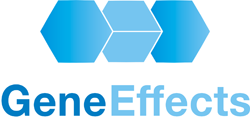Cov noob noob tsis passive. Lawv yog lub hom phiaj yog cov molecular “nqaij npuas”; feem ntau (tiam sis tsis yog) tshwj xeeb proteins, nyeem los yog tig lawv txoj kev ua. Feem ntau no txhais ua proteins, tab sis sab qhov tseeb luag hauj lwm ntawm cov proteins, Lub neej ntawm tes los yog ib tug tseem organism, is still one of the great challenges of modern biology.
The best ways that we can assign function to proteins are by seeing what happens when we either switch genes off completely, ramp up their activity to abnormal levels, or introduce random changes into proteins. Furthermore, if you are really interested in the function of a gene, the best test is to change your gene in it’s natural “environment”, by which I mean a whole living animal or plant, rather than in an isolated cell in a laboratory test-tube. This is because another characteristic of genes and proteins is that they rarely act in isolation – more often, they act in concert with other proteins forming pathways or networks.
In a previous post, I described how we had found out which genes had been lost in a mouse with part of one chromosome deleted. We wanted to do this because as chance would have it, some people have the misfortune to be born with some of the equivalent human genes also missing. But which of those genes was relevant to the symptoms people exhibited? Did all the genes contribute to the disorders, or were some genes more important? Of course, the only way to find that out with confidence would be to find (or create!) people in which each gene in the region had been modified – ethically highly questionable and technically very difficult. Li ntawd, in the absence of people, one of our most powerful tools is to study genetically modified mice, with alterations in single genes instead of deletions of the whole chromosome region.
Abnormal development is seen in human embryos in which specific genes are lost and our mutant mice mimicked many of the same traits; some showed altered brain and skull, others heart and kidney defects. Abnormalities in some of the mice affected adult behaviour, such as altering activity or anxiety, even in those with only one copy of a gene modified. Unexpectedly, we found that several different genes, physically close together, each gave similar abnormalities when they carried mutations e.g. four altered heart development, two gave kidney defects and several altered behaviour.
The story our mice told us was that it is likely that in people with deletions of several genes, many of the abnormalities are probably ensemble effects arising from the loss of several genes with similar functions, rather than the influence of a single, critical, ”master” gene.
